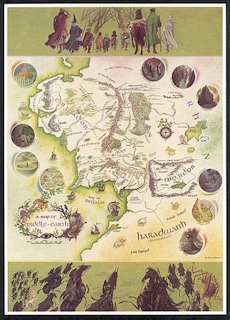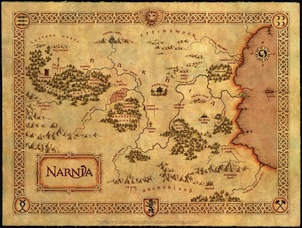At BookBrowse, we don't just review books, we go 'beyond the book' to explore interesting aspects relating to each book we feature. Here is a recent "Beyond the Book" feature for Enon by Paul Harding:
In Enon (as in his 2010 Pulitzer Prize-winning novel Tinkers), Paul Harding constructs and describes the fictional New England town of Enon, complete with a chronicling of its multi-generational history, descriptions of its homes, woods and native plants, and stories of those buried in its cemetery.
Generally speaking, the setting of a story helps locate the culture, mindset, and mood of a book; it guides readers' emotions, allows them to form expectations for characters' behaviors, identifies whether they fit in, and places them in time and space. When writers create fictional settings – whether made-up towns in familiar places, or fantastical worlds we never dreamed possible – they have the ability to manipulate everything around them and dive deep into their creative wells, which makes for some great storytelling.
 Perhaps one of the most famous literary settings is J.R.R. Tolkien's Middle-earth (featured in The Hobbit, The Lord of the Rings trilogy, and The Silmarillion), home to hobbits of the Shire, elves of Lothlórien, Gondor's men, and orcs of Mordor. Praised for its intricate and incredibly detailed histories, Tolkien creates more than just a setting for his books. He develops an entire universe filled with elaborate genealogies, and even new languages and alphabets (which groups such as the Linguistic Fellowship of the Tolkien Society have studied and published on at length).
Perhaps one of the most famous literary settings is J.R.R. Tolkien's Middle-earth (featured in The Hobbit, The Lord of the Rings trilogy, and The Silmarillion), home to hobbits of the Shire, elves of Lothlórien, Gondor's men, and orcs of Mordor. Praised for its intricate and incredibly detailed histories, Tolkien creates more than just a setting for his books. He develops an entire universe filled with elaborate genealogies, and even new languages and alphabets (which groups such as the Linguistic Fellowship of the Tolkien Society have studied and published on at length).
 And who can forget L. Frank Baum's Land of Oz, where Munchkin Country, and Emerald City provide Dorothy (and her little dog too) with a colorful and wondrous backdrop for their adventures. C.S. Lewis takes readers to Narnia, J.K. Rowling makes magic in Hogsmeade, and J.M. Barrie gives us Neverland, where we can fly and never ever have to grow up.
And who can forget L. Frank Baum's Land of Oz, where Munchkin Country, and Emerald City provide Dorothy (and her little dog too) with a colorful and wondrous backdrop for their adventures. C.S. Lewis takes readers to Narnia, J.K. Rowling makes magic in Hogsmeade, and J.M. Barrie gives us Neverland, where we can fly and never ever have to grow up.
On the less fantastical side of the spectrum, F. Scott Fitzgerald showers readers in the opulence of The Great Gatsby's West Egg on Long Island, Gabriel García Márquez's Macondo (said to be based on Aracataca in Colombia) is home to the Buendía family in One Hundred Years of Solitude, and William Faulkner's Yoknapatawpha County (based on Lafayette County, Mississippi) is the setting for all but three of his novels. According to H-net (Humanities and Social Sciences Online), "Faulkner called the setting for his novels and stories both 'actual' and 'apocryphal.' Yoknapatawpha County is the place where he resolved his simultaneous impulses to invent and to document."
is home to the Buendía family in One Hundred Years of Solitude, and William Faulkner's Yoknapatawpha County (based on Lafayette County, Mississippi) is the setting for all but three of his novels. According to H-net (Humanities and Social Sciences Online), "Faulkner called the setting for his novels and stories both 'actual' and 'apocryphal.' Yoknapatawpha County is the place where he resolved his simultaneous impulses to invent and to document."  Harding uses this same approach in his descriptions of Enon; every building has a story of its own, every gravestone a link to the past. In this way, he puts himself in the role of author/historian, which helps him create such rich and multi-layered characters.
Harding uses this same approach in his descriptions of Enon; every building has a story of its own, every gravestone a link to the past. In this way, he puts himself in the role of author/historian, which helps him create such rich and multi-layered characters.
Since 2004, in recognition of writers who evoke such a sense of place, the Royal Society of Literature has given out an annual award of £10,000 to the winner of the Ondaatje Prize (named after its benefactor, Sir Christopher Ondaatje). Judges of the 2013 prize, Julia Blackburn, Margaret Drabble, and Ian Jack commented that, "A place, whether it is a small room, a forest floor, or an entire continent, is defined by the limitations and freedoms it offers and by the layers of emotion and history it contains. For this prize we are trying to see where and how this elusive spirit has been best captured in a book of poetry, fiction, biography, or personal memoir."
While Harding isn't eligible for the Ondaatje Prize (it is restricted to citizens and residents of the UK Commonwealth or Republic of Ireland), he certainly knows how to construct an environment that does more than provide a backdrop. Enon is a complete character, living, breathing, changing alongside generations of the Crosby family, and will surely take its place among memorable literary settings.
by Elena Spagnolie
First image: A map of JRR Tolkien's Middle Earth
Second image: A map of CS Lewis' Narnia
Third image: Aracataca, Colombia
Fourth image: Lafayette County, Mississippi from University of California Press